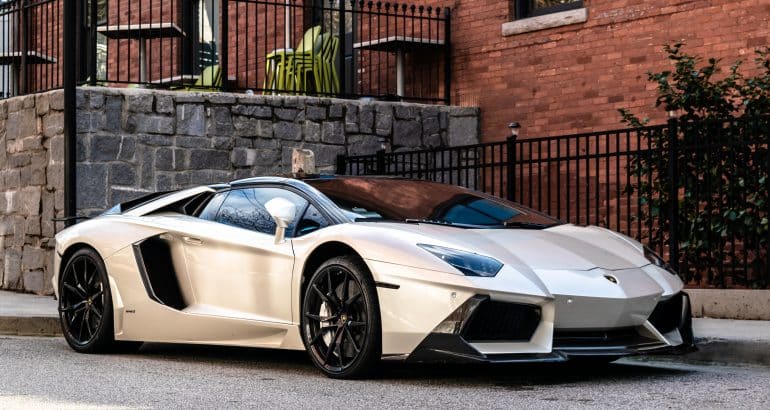
I don’t know about you, but I’ve never once hung out with my friends and had a lighthearted chat about insurance. Most people dread just having to shop for insurance let alone read through the legal language of their polices. Stop me if you’ve heard this one though: Car enthusiast shops for insurance online, chooses the policy with a good price, needs to file a claim after losing a game of chicken with a deer and then finds out his insurance doesn’t actually cover the loss. Cue sad trombone.
Insurance isn’t something people enjoy paying for. We totally get that. However, the only thing that’s worse than paying for something you may never need is actually needing the thing and finding out that it doesn’t work. Reading through your policy will give you a clear idea of what is covered and what is not but there’s a lot of questions that car enthusiasts specifically have so we’re here to help. Please note, the information listed below is intended to be a general overview of general automotive insurance coverages and is not specific to any policy. The company that issues your policy is the author of the contract and each company uses their own language and sets of conditions and exclusions. If you need any help understanding your specific policy, feel free to reach out to us, we’ll be happy to help you sort out what’s what and make sure you have the kind of coverage you need.
Liability
When you see numbers like 25/50/25 – those are communicating the limits of liability in your policy. It’s important to remember that liability pays the other party you cause damage to. It does not cover damage to yourself, passengers, vehicle or property. Only the other guy. The first 25 is $25,000 maximum per person of bodily injury. The $50,000 is maximum limit per incident and the last 25 is $25,000 maximum for property damage.
Here’s a scenario, let’s say you’re driving through midtown in your Mitsubishi Lancer Evolution X, you run a red light, swerve to miss a pedestrian and hit a 2022 Porsche Cayenne head on with 3 passengers in their car. The driver and passenger in the front seat both need to go to the hospital for back pain, a broken wrist, and injuries from the airbag deployment. The 3rd passenger that was in the backseat has a broken nose. If you have the mandatory minimum 25/50/25 your insurance will pay up to $25,000 per person to pay for treatment for injuries BUT not more than $50,000 for all 3 people. If passenger #1 needs $15,000, passenger #2 needs $25,000 and passenger #3 needs $10,000 you’d be fine however, anything over that amount and you’re on the hook personally. For the damage to the Porsche, your policy will cover up to $25,000. Beyond that, once again you’re on the hook personally.
If you have liability only- that’s all your insurance company is going to pay for. Damage to your car, injury to you or your passengers is not covered
Medical Payments
Medical Payments Coverage is what you need if you want the insurance company to cover medical bills for you and the passengers in your car. You are not required by law to have it and you may be tempted to skip Medical Payments coverage if you have individual health insurance but please note how this coverage differs:
#1: In many cases, this coverage is available 3 years after an accident regardless of fault.
#2: Medical Payments covers funeral expenses for you or any of the passengers in your car (health insurance does not).
#3: This coverage insures you and your family if you are involved in an incident with a car as a pedestrian.
#4 This coverage applies even when you are driving a vehicle you do not own (such as a borrowed or rented car).
It should be noted that any injury you sustain while racing or engaged in a “speed event” will not be covered by your standard Medical Payments coverage. For coverage there, you need Track Day Insurance.
Uninsured and Underinsured Motorists
This is usually optional coverage. It covers you and your passengers if there is damage caused by a driver who does not have insurance, doesn’t have enough insurance, who left the scene of the accident or if the insurance company for the person who caused the accident denies their claim. Uninsured and underinsured motorists may be sold separately. Check with your specific insurer if you want both coverages.
In our example above, the EVO driver’s liability insurance covered up to $25,000 in property damage. If the Porsche Cayenne was hit hard enough for airbags to deploy, there’s a good chance the damage is going to be more than $25,000. The Cayenne owner’s underinsured motorist coverage would pay the remainder required to get the car fixed. The Cayenne’s insurance company would likely sue the Evo owner personally to recover what they paid shielding the Cayenne from having to do this themselves.
Collision
Collision insurance is usually required by lenders. If you own your car free and clear, you can choose whether to purchase this coverage. This is the insurance that covers the damage to your car if it’s damaged in an accident with another car or object (such as a tree) or overturned. Please note: Accidents involving animals are not covered by collision insurance, for that you need comprehensive.
For car enthusiasts, there are a number of issues you could have with this type of coverage. For example, the insurance company may exclude coverage for both engine and cosmetic modifications. They also will limit the amount paid for things like permanently installed electronic devices you may have put in the car. The Insurance company could also choose to replace, repair or pay you their determined actual cash value of the car after a loss and you may not agree with their assessment. Don’t wait until you have a claim to figure out what can be covered and what can’t. The insurance company should be aware of the risk they are taking and so should you.
Comprehensive
Some insurance companies are now calling this coverage Other Than Collision. This covers things that happen to the vehicle such as fire, falling objects, theft, vandalism, flood, contact with a bird or other animal or glass breakage (unless caused by collision). This coverage covers you when you’re in your car or when you’re in a rented/borrowed car.
IMPORTANT NOTE: regardless of the cause of loss, personal property inside the vehicle is NOT COVERED by either collision or comprehensive. It may be covered by your homeowners or renters policy though. Check your specific policy for details.
Transportation Expenses
This is sometimes called Rental Reimbursement. It generally pays a certain amount per day up to a predetermined maximum amount for rides, car rentals, bus far and/or train tickets so that you can get where you need to while waiting for your car to be repaired. Please note that there may be a waiting period. If your car is stolen, the waiting period is generally longer than if there is an accident. If you elect this coverage, make note of the per diem and the overall limits to ensure it’s worth it to you.
Common Policy Add-On’s (Endorsements)
Often, there are things you can add on to your standard personal car insurance policy-bolt on’s if you will. Towing and Labor covers road side repairs and towing to a mechanic shop but does not cover the repairs made to the car once after it’s deliver to the shop. Miscellaneous type vehicle insurance is to cover motorcycles, moped, recreational vehicles, motor homes and golf carts. Lastly, Extended non-owned coverage is to add on a car that you don’t own but use regularly such as a company car.
In general, there are some things that just aren’t going to be covered by your personal car insurance such as driving for a ride share company. In fact, using your personal car for business at all is grounds for claims to be denied because your coverage does not apply. If you run an automotive business and are driving a customer’s car (or other car you do not own) you will also not be covered in the event of an accident. You need commercial automotive insurance for those instances.
No matter how much your tires are, they aren’t going to be covered despite the fact that vandalism is covered with elected comprehensive coverage. Your insurance company isn’t going to be there for you when your ex slashes those tires so date wisely.
If you have a truck or van that has “custom furnishings” like beds, tables, kitchenettes or other installed gear for camping or recreation please note that those things are not generally covered by your insurance. Car enthusiasts should check the specific language in their policy around this though to ensure any custom equipment they have installed doesn’t fall within this exclusion.
Most importantly, your time at the track is not going to be covered by your personal car insurance policy. The language is usually related to speed contests and pre-arranged races but anytime you drive out onto the track, you’re going to have a hard time justifying your actions.
Shift Brokers Can Help You Navigate
Shift Brokers is car insurance for car enthusiasts. We can help you not only navigate insurance rules and policies. And because we are car enthusiasts and specialize in policies for car enthusiasts, we can help you navigate the unique needs and situations only car enthusiasts find themselves in. The best part is, because we are brokers, we represent you, not the insurance companies.
Request a quote and lets start talking cars.


